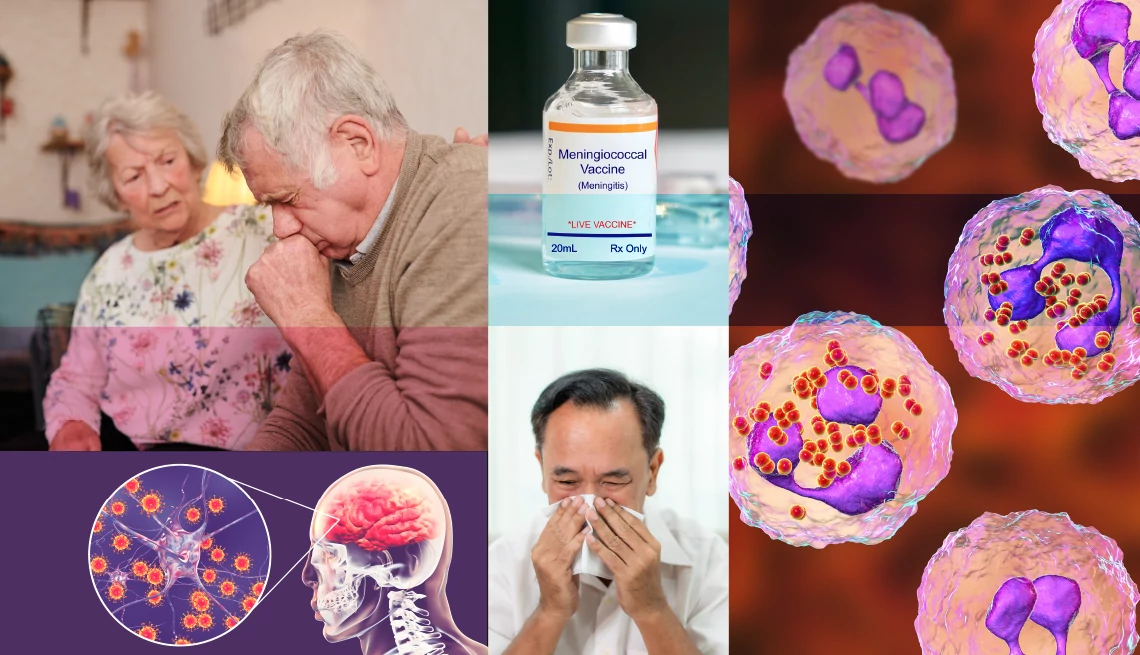AARP Hearing Center


U.S. health officials are warning doctors about an uptick in cases of meningococcal disease, a rare but serious illness caused by the bacterium Neisseria meningitidis.
Its occurrence has been decreasing over the last decade, in large part due to vaccines that can help prevent the disease, says William Schaffner, M.D., an infectious disease expert and professor of preventive medicine and health policy at Vanderbilt University Medical Center in Nashville, Tennessee.
But as of March 25, 143 cases of meningococcal disease have been reported this year, an increase of 62 cases over the 81 reported as of this date in 2023. A total of 422 cases were reported in the U.S. in 2023, which was the highest annual number of cases reported since 2014, the Centers for Disease Control and Prevention (CDC) said in its recent health advisory.
Different types of Neisseria meningitidis
There are different types (or serogroups) of N. meningitidis.
- Serogroups A, B, C, W, X and Y are responsible for most meningococcal disease worldwide.
- B, C, W and Y circulate in the U.S.
- The current increase is mainly attributable to serogroup Y.
- Vaccines against A, C, W, Y (MenACWY) and serogroup B (MenB) are available in the U.S.
Source: CDC
“That’s a surprise,” Schaffner says about the trends. What’s also puzzling, he says, is that cases of meningococcal disease, which can present as either meningitis or a bloodstream infection, are often seen in teens and young adults. However, the majority of cases being reported are among people ages 30 to 60. Black adults and people with HIV are also being disproportionately impacted by the disease.
Here are six things you need to know about meningococcal disease, including its warning signs and symptoms.
1. It spreads through close contact
Unlike the flu and COVID-19, which spread pretty easily from person to person, it takes close and lengthy contact — and a swap of saliva — to spread meningococcal bacteria, the CDC says.
“You usually get it from very close contact to infected people — especially if you’re kissing or if you’re around someone who is coughing a lot who has it,” says Barry Rittmann, M.D., an epidemiologist at VCU Health and assistant professor of medicine in the Division of Infectious Diseases at VCU School of Medicine in Richmond, Virginia. Sharing food and drinks can also spread the disease. Some people — about 1 in 10 — have N. meningitidis bacteria in the back of their nose and throat and never get sick, but they can pass it on to others. These people are referred to as carriers.






























































More on Health
Older Adults Should Get a Spring COVID Shot
CDC issues new vaccine recommendations
Should You Be Concerned About the Bubonic Plague?
A case of the black plague has been reported in Oregon
What to Know About Bird Flu
The ongoing outbreak has some scientists concerned
MEMBERS ONLY
Try These Tips for Living a Healthier Life
Small changes can add up to big mental and physical results
Recommended for You